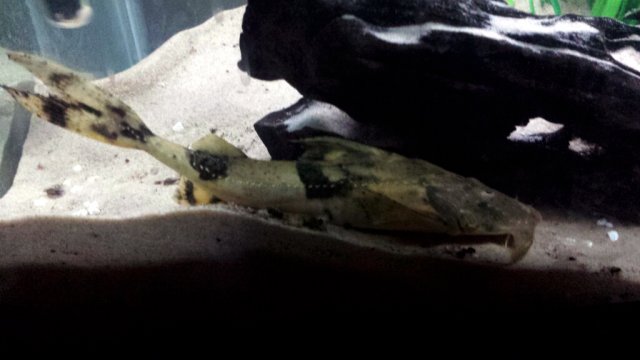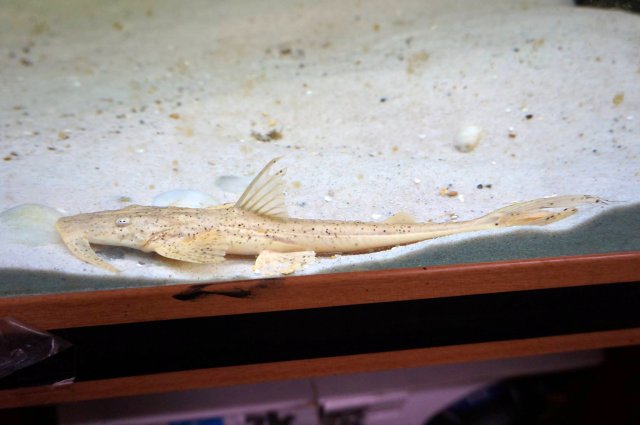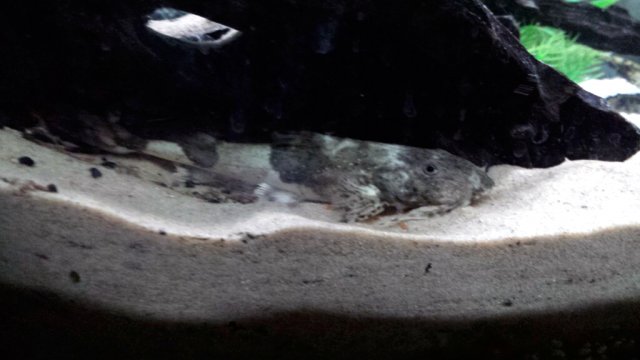A Guide to the Care and ID of Goonch Catfish (Bagarius) 1.01
1.01 update: Formatting for post migration ease of reading.
Table of Contents, Introduction & Acknowledgements
Table of Contents
Introduction
Suggested Reading
1.01 update: Formatting for post migration ease of reading.
Table of Contents, Introduction & Acknowledgements
Table of Contents
NOTE: Click on the hyperlinks to go to that content.
Introduction, Acknowledgements & Suggested Reading
Quick ID Reference
B. bagarius (Highland Giant)
B. yarrelli (Lowland Giant)
Bagarius suchus
Bagarius rutilus
Bagarius cf. INDOCHINA (lica)
Bagarius cf. DWARF
References
Introduction, Acknowledgements & Suggested Reading
Quick ID Reference
B. bagarius (Highland Giant)
B. yarrelli (Lowland Giant)
Bagarius suchus
Bagarius rutilus
Bagarius cf. INDOCHINA (lica)
Bagarius cf. DWARF
References
Introduction
Greetings once again everyone!
This particular guide has been long coming and incredibly difficult in the making. I first decided to actually make this guide almost two years ago at the time of actually publishing it; November 2, 2014. It took me nearly three months of research before I even realized that at that time (early 2013), I could not make it based on the data that I had available to me. After a few months of research, I posted the Impossibility thread. After extensively researching this subject with the assistance of Matt (Estarego8), Julian Dignall and especially Doctor Hoek Hee Ng, progress was made and many things were learned. Through the haze of ambiguity, we were able to seek the clarity of truth and piece together something akin to what is actually going on with this genus. Without the help of those wonderful people who are listed above, this project would not have been possible.
Based on the guidance of Jools, no species is being given for the Indochina or Dwarf varieties. It is not clear at this point if the Indochina version is B. lica or B. nieuwenhuisii, or if indeed both of them are valid with lica living on the mainland and Sumatra and nieuwenhuisii living on Borneo and the Indonesian Archipelago. In this breakdown of the genus, the Dwarf doesn't have a properly designated and published name, so we are forced to call it simply the Dwarf.
You will all notice that I've left out the Care section that I've included in several of my other guides. That is because the wants and needs of these fish aren't academic yet. Their needs are something we don't have quite ironed out yet, and I don't want to have someone's dead fish on my hands. I've got the classification figured out, but there's still quite a bit of work to do in figuring out how to keep each of the six types alive!
It is my hope that this work will allow people to gain a better grasp of the of the genus Bagarius.
This particular guide has been long coming and incredibly difficult in the making. I first decided to actually make this guide almost two years ago at the time of actually publishing it; November 2, 2014. It took me nearly three months of research before I even realized that at that time (early 2013), I could not make it based on the data that I had available to me. After a few months of research, I posted the Impossibility thread. After extensively researching this subject with the assistance of Matt (Estarego8), Julian Dignall and especially Doctor Hoek Hee Ng, progress was made and many things were learned. Through the haze of ambiguity, we were able to seek the clarity of truth and piece together something akin to what is actually going on with this genus. Without the help of those wonderful people who are listed above, this project would not have been possible.
Based on the guidance of Jools, no species is being given for the Indochina or Dwarf varieties. It is not clear at this point if the Indochina version is B. lica or B. nieuwenhuisii, or if indeed both of them are valid with lica living on the mainland and Sumatra and nieuwenhuisii living on Borneo and the Indonesian Archipelago. In this breakdown of the genus, the Dwarf doesn't have a properly designated and published name, so we are forced to call it simply the Dwarf.
You will all notice that I've left out the Care section that I've included in several of my other guides. That is because the wants and needs of these fish aren't academic yet. Their needs are something we don't have quite ironed out yet, and I don't want to have someone's dead fish on my hands. I've got the classification figured out, but there's still quite a bit of work to do in figuring out how to keep each of the six types alive!
It is my hope that this work will allow people to gain a better grasp of the of the genus Bagarius.
Suggested Reading
Last edited:








